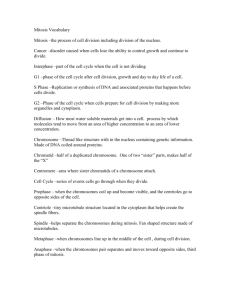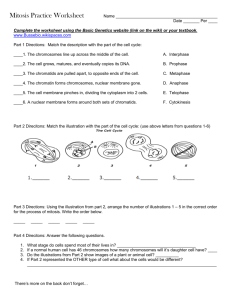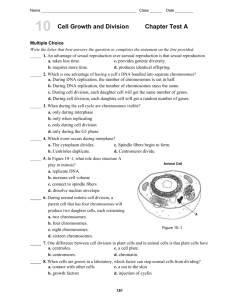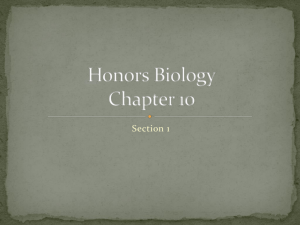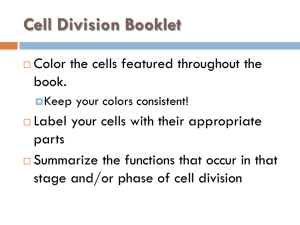Cell Division Review
advertisement
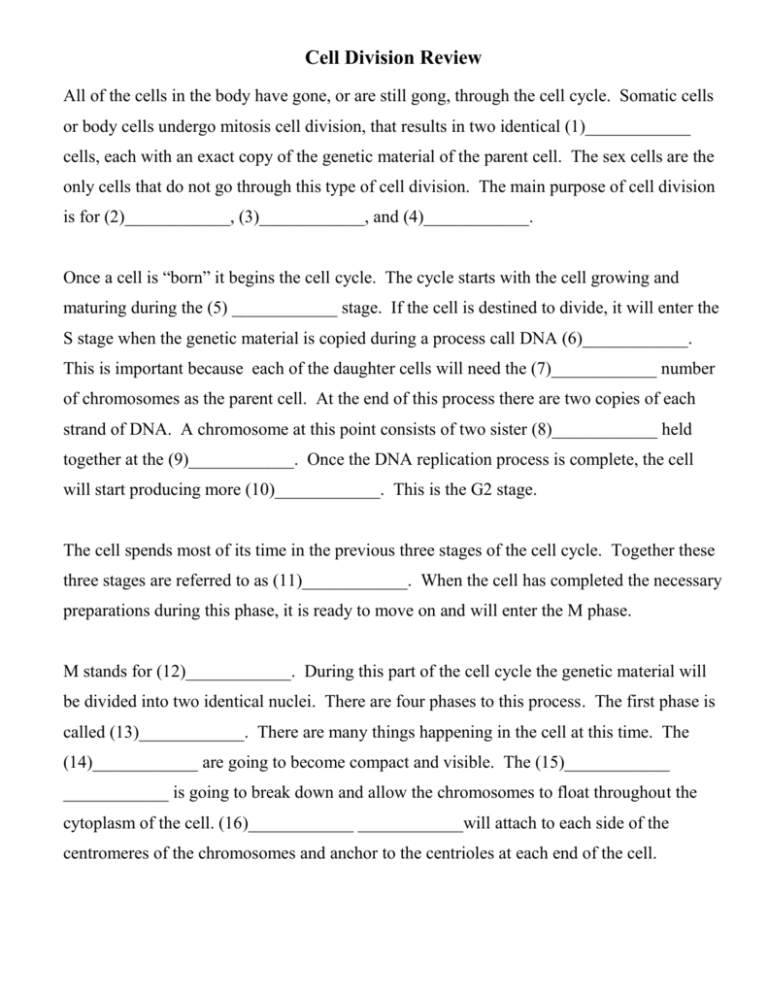
Cell Division Review All of the cells in the body have gone, or are still gong, through the cell cycle. Somatic cells or body cells undergo mitosis cell division, that results in two identical (1)____________ cells, each with an exact copy of the genetic material of the parent cell. The sex cells are the only cells that do not go through this type of cell division. The main purpose of cell division is for (2)____________, (3)____________, and (4)____________. Once a cell is “born” it begins the cell cycle. The cycle starts with the cell growing and maturing during the (5) ____________ stage. If the cell is destined to divide, it will enter the S stage when the genetic material is copied during a process call DNA (6)____________. This is important because each of the daughter cells will need the (7)____________ number of chromosomes as the parent cell. At the end of this process there are two copies of each strand of DNA. A chromosome at this point consists of two sister (8)____________ held together at the (9)____________. Once the DNA replication process is complete, the cell will start producing more (10)____________. This is the G2 stage. The cell spends most of its time in the previous three stages of the cell cycle. Together these three stages are referred to as (11)____________. When the cell has completed the necessary preparations during this phase, it is ready to move on and will enter the M phase. M stands for (12)____________. During this part of the cell cycle the genetic material will be divided into two identical nuclei. There are four phases to this process. The first phase is called (13)____________. There are many things happening in the cell at this time. The (14)____________ are going to become compact and visible. The (15)____________ ____________ is going to break down and allow the chromosomes to float throughout the cytoplasm of the cell. (16)____________ ____________will attach to each side of the centromeres of the chromosomes and anchor to the centrioles at each end of the cell. The next phase in mitosis, called (17)____________, finds the chromosomes lining up along the (18)____________ of the cell. (19)____________ is the name of the third phase of mitosis. At this point the (20)____________, which is holding the chromatids together, will divide or split apart. When this happens, each of the chromotids are now considered separate (21)____________. The spindle fibers then pull the chromosomes toward each end of the cell. (22)____________ is the last phase of mitosis. When the chromosomes reach opposite ends of the cell, the spindle fibers will disappear. A new (23)____________ ____________will also form around each group of chromosomes and a new nucleolis will form in each new nucleus. When this phase is complete there is still only one cell, but it has two nuclei. In order for the cell division to be complete, the cytoplasm must be divided. This happens in a process called (24)____________. In plant cells, cytokinesis is accomplished by the cell forming a (25)____________ ____________ between the two nuclei. In animal cells the (26)____________ ____________ pinches together dividing the cyctoplasm.




